In this essential guide, “How to Test the Strength of Your Phone Holder After Installation,” you’ll learn a systematic approach to ensure your phone holder can withstand the twists and turns of the road. Did you know that a staggering 80% of accidents related to distracted driving occur because of unsecured devices? To protect yourself and your phone, this guide walks you through crucial testing methods, from stability checks to stress tests, ensuring that your holder is not just an accessory but a reliable protector during your journeys. Don’t take chances—find out how to ensure your phone is safely accessible while driving!
Inspect the Installation
Inspect the phone holder’s attachment closely. Look for any visible gaps or misalignments between the holder and the dashboard or windshield. Ensure that the holder feels securely fastened, with no wobbling or looseness. Check that all mounting components are tightened according to the manufacturer’s specifications, giving you confidence in its stability before proceeding with any strength testing.
Check the Adhesive
Check the adhesive by ensuring it has fully cured before use. Refer to the manufacturer’s instructions for the recommended curing time, which is typically 24 hours. Avoid testing the holder prematurely, as this could affect its performance. Wait patiently for the adhesive to achieve its optimal strength to ensure a secure hold.
Place Your Phone in the Holder
Carefully position your phone in the holder, aligning it with the intended grip. Check the fit by gently shaking the holder to see if the phone remains stable. Ensure that the phone sits snugly and is unable to wiggle or slip out easily. If it feels loose, remove the phone and adjust the holder until you achieve a secure fit.
Perform a Gentle Shake Test
Gently shake the phone holder while it’s securely mounted. Observe if the holder stays stable and does not shift or wobble. If you notice any movement or looseness during this test, remove the holder and re-install it carefully, ensuring all connections are tight and secure. Repeat the shake test after re-installation to confirm the holder’s stability before use.
Test Stability While Driving
Take a short drive on a smooth road. Observe how the phone holder performs while you make gentle turns or accelerate. If you notice shaking or the phone sliding out of position, it’s time to re-evaluate its installation. Tighten any loose components or reposition the holder to ensure a snug fit.
Apply Pressure Test
- Place your phone securely in the holder.
- Position yourself where you can comfortably apply downward pressure on the phone.
- Gently press down on the phone.
- Observe if the holder maintains its grip.
- If the phone slips or moves, assess the holder for necessary adjustments.
- Tighten or reposition the holder to ensure a firmer grip as needed.
Evaluate During Turns
- Make sharp turns while driving to test the stability of your phone holder.
- Observe if the phone remains secure and doesn’t shift during the maneuver.
- Adjust the holder if it fails to keep your device steady.
- Repeat this process with various angles and speeds to ensure reliability.
Check for Heat Resistance
Park your vehicle in direct sunlight with the phone holder mounted in place. After some time, carefully remove the holder and inspect the adhesive under the base. Check for any signs of degradation, such as peeling or crumbling, and ensure the holder maintains its original shape without any deformation. If the adhesive is still intact and the holder looks unchanged, it has passed the heat resistance test successfully.
Repeat Tests Regularly
Check the strength of your phone holder after long drives, especially if your journey involved bumpy roads. Inspect the mounting mechanism — look for any signs of wear, looseness, or damage. If you notice the holder feels unstable, tighten the screws or replace it if necessary. Examine the holder’s material for any signs of cracking or fading due to extreme temperature changes, like leaving it in a hot car or using it in freezing conditions. Make it a habit to conduct these checks before going on a trip to ensure your device stays securely mounted.
Seek Professional Help if Needed
Identify and assess the strength issues of your holder. If you notice repeated problems, such as wobbling or inability to support weight, seek a professional’s expertise. Look for a qualified handyman or installation service with experience in similar projects. For example, if your holder is meant to support shelving but seems unstable, consulting a professional can lead to appropriate installation adjustments or recommend durable replacement options that suit your space better.
Ensuring Lasting Stability
In conclusion, ensuring the strength of your phone holder after installation is essential for both your safety and the protection of your device. By following the testing steps outlined in this blog post, you can confidently verify that your phone holder is securely fastened and ready for use. Remember, a reliable phone holder not only enhances your driving experience but also minimizes distractions and keeps you focused on the road. So, take a moment to test it out—you’ll be glad you did!
Essentials for Testing
Ensure Secure Support
Step-by-Step Guide to Securing Your Car Phone Holder Effectively
- Choose the Right Surface: Start by selecting a smooth, flat surface on your dashboard or windshield. Avoid textured surfaces, as they may not provide a secure grip for your phone holder
- Clean the Area: Use a microfiber cloth and some rubbing alcohol to clean the chosen spot thoroughly. This removes dust, grease, and any residue that could interfere with adhesion
- Prepare the Holder: If your phone holder has a sticky pad, gently peel off the protective backing. For suction cup holders, ensure the suction cup is clean and free of debris
- Press Firmly: When placing the holder, press it firmly against the surface for about 10-15 seconds to ensure a strong bond. For suction cups, push the middle of the cup to create a vacuum seal
- Let it Settle: If possible, allow the holder to set for a few hours before attaching your phone. This can help ensure it sticks well and gives you a reliable grip while driving
- Following these steps will help you make sure your car phone holder sticks securely, allowing you to safely keep your phone within reach while on the road!
Tips for Secure Attachment
When choosing surfaces for adhering a car phone holder, look for the following options that offer the best adhesion:
- Dashboard: A flat, smooth dashboard surface is ideal. Materials like plastic, rubber, or a combination of both work well. Ensure it’s clean and dry before application.
- Windshield: Glass windshields are also excellent surfaces for suction-cup holders. Make sure it’s cleaned thoroughly to enhance the suction.
- Center Console: Many center consoles have smooth, flat areas that can support a phone holder. Like the dashboard, ensure this area is clean.
- Air Vents: If you’re using a vent-mounted holder, the slats should be sturdy and free of debris for optimal grip.
- Textured Surfaces: Surfaces with a slight texture (like matte finishes) may also work if you use adhesive mounts specifically designed for such areas.
Always remember to clean the area with alcohol or a suitable cleaner before applying the holder to ensure maximum adhesion. Happy driving and navigating!
When it comes to sticking car phone holders, several common mistakes can hinder their effectiveness. Here are some of the key missteps to avoid:
- Not Cleaning the Surface: One of the biggest mistakes is not properly cleaning the surface where you plan to attach the holder. Dust, dirt, or grease can prevent the adhesive from bonding well. Always wipe the area with a microfiber cloth and ensure it’s completely dry before attaching the holder.
- Ignoring Temperature Conditions: Your chosen attachment spot should ideally be at room temperature. Temperature extremes can affect the adhesive’s ability to stick. Avoid mounting your holder in extremely hot or cold conditions, as this can lead it to lose grip over time.
- Applying Too Much Pressure: While you want to ensure a solid bond, applying excessive pressure while pressing the holder down can sometimes displace it or damage the adhesive. Gently press and hold for a few seconds, allowing the adhesive to do its job.
- Mounting on Curved or Textured Surfaces: Many people make the mistake of mounting holders on curved or textured areas, which can prevent them from adhering properly. Opt for flat, smooth surfaces for the best results.
- Overlooking the Recommended Load: Each phone holder has a weight limit. Exceeding this limit can cause the holder to detach. Make sure your phone fits well within the holder’s specifications.
- Not Waiting for the Adhesive to Cure: If your holder uses a strong adhesive, it’s important to let it set for the recommended time before using it. Rushing this step can lead to premature detachment.
By being mindful of these factors, you can enhance the longevity and effectiveness of your car phone holder. Good luck!

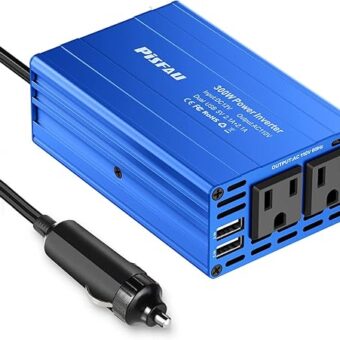
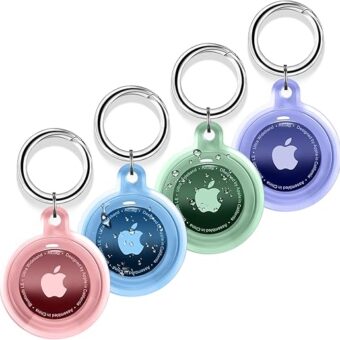

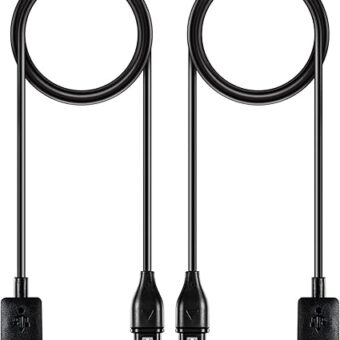

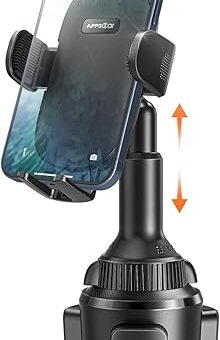
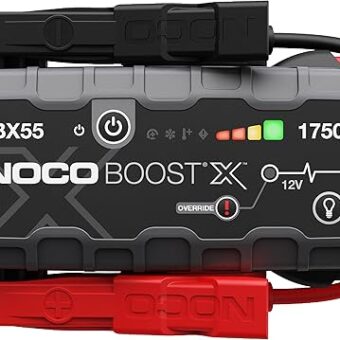

![TICILFO Phone Holders for Your Car [Gooseneck Flexible] Phone Stand for Car Dashboard Windshield Automotive Accessories [Strong Suction Cup] Cell Phone Car Mount for All iPhone Android Smartphone](https://m.media-amazon.com/images/I/81t4wUG9S1L._SS520_.jpg)


![JOYROOM Bike Phone Holder, 2024 Upgrade Phone Mount for Bike [7.2'' Big Phone Friendly&Ultra-Stable], Bicycle Motorcycle Phone Mount Holder Handlebar Cell Phone Clamp for iPhone 15 Pro Max Scooter](https://m.media-amazon.com/images/I/61aoqpAeajL._SS520_.jpg)


![Universal Car Phone Holder Mount,360 Degrees Rotation Dashboard Phone Holder [Upgrade Clip Never Fall],car Phone Mount for iPhone,Samsung,Google,Nokia,and 4 to 7" Smartphones](https://m.media-amazon.com/images/I/61r0UWAWY9L._SS520_.jpg)


This is super useful for anyone who drives a lot. I remember when I first got my phone holder, I didn’t think to test it until my phone fell while I was driving. I’ll definitely try the pressure test this time around!
Glad you found it useful! The pressure test is great for ensuring your holder can handle the bumps of daily driving. Stay safe out there!
Great guide! I just installed a Spigen car phone holder last week, and I thought it was solid until I went over a bump and my phone slipped out. Definitely going to do the shake test and check the adhesive again. Thanks for the reminder!
I adapted the steps a bit for my needs. I have a magnetic holder for my iPhone, so I skip the adhesive check since it’s not applicable. Instead, I do a strong tug test to make sure the magnet is holding tight before I hit the road. It works for me!
That’s a smart adaptation! The tug test is a good way to ensure that the magnet is strong enough. Thanks for sharing your variation!
I’ve been using the iOttie Easy One Touch holder for a while now, and honestly, it’s held up pretty well. I always make sure to do the stability test when I first install it, especially since I drive a lot on rough roads. Super helpful article!
Thanks for sharing your experience! The iOttie is a solid choice, and doing a stability test is definitely a good habit, especially on bumpy roads. Safe driving!
I’d love to see an article on how to clean or maintain different types of phone holders. My friend has a suction cup one, and it gets dusty and loses grip after a while. Would be great to know how to care for them!
Great idea! Maintenance tips can definitely prolong the life of phone holders. I’ll consider doing a piece on that in the future. Thanks for the suggestion!